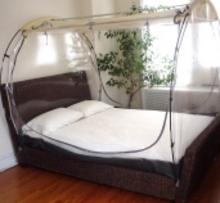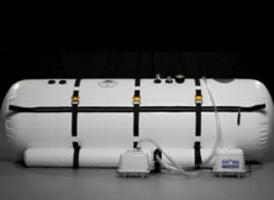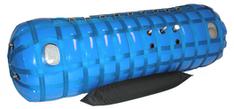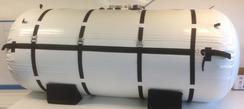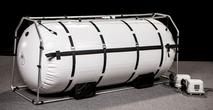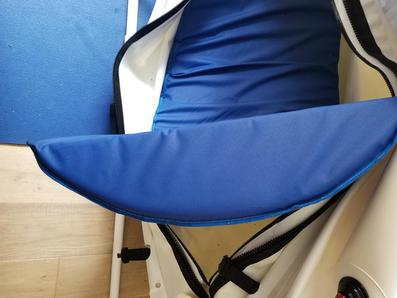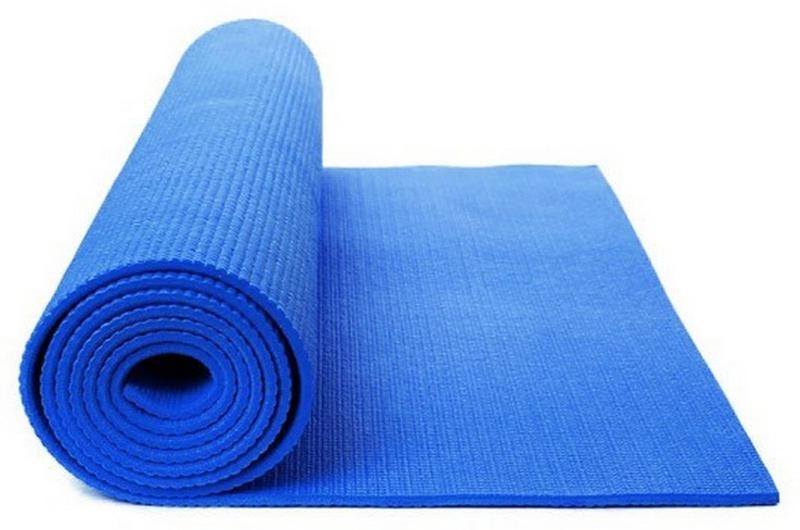This section will help you get a better understanding of different words and industry jargon in the hyperbaric chamber Industry.
Some of these terms are really not that important, but others are, so don't be tricked into buying a chamber just because companies and their websites talk about or have pictures made to prove these points. The hardest part in my hyperbaric chamber quest was that many of these terms and ideas were repeated over and over again by different companies. So the trickier part is to find out to see who was lying about their claimed quality and technology. The rest of my site does this.
If you have a better definition for these terms, please don't email me. I don't care and you're probably from a hyperbaric company trying to make something better to help you out. Some of these topics are covered in detail in other sections of the site. I will not comment on the validity, quality and differences here.
Edema: Swelling increases the distance of the diffusion of oxygen and nutrients into and toxins out of the cell's capillaries. When there is swelling the expanded cells cannot get the oxygen needed when under insignificant pressure. The blood cells are clumped and there is too much space in between the cells for ample diffusion to take place.
Sanitization: What you do to clean your chamber. Some are harder to clean than others. BEWARE of sanitizers that leave a bromine or chlorine odor on your skin that is a red flag that you are absorbing all those chemicals in your skin. I have had dealers tell me to use Windex. Can you believe THAT?
Soundproofing: Material used to dampen the sound from the compressor. Thicker rubber pads can muffle the humming noise from the pumps. The more expensive chambers usually are quieter even at high airflow rates.
FILTER The nasty particles that will cause bacteria to harbor in the chamber should be filtered out. The most common filters are made from sand, a man made cartridge, or diatomaceous earth. Do not get distracted by filtering stage claims. I don't care how many stages it has. It either filters the air or not. Do not get scammed when they say their filter lasts longer than others. You don't base filter life on the material... you base it on usage. I would hang up the phone on a company that tried to sell me their filters based on this sales tactic.
Injectors: This is where the air comes out from the blowers. Some are louder than others.
Pump: Describes the mechanics of the motor and the air pump. Some are more green than others and create less or more EMF
Blower: The motor that brings in air, like a reverse vacuum. This is not part of the motors when salespeople are talking about horsepower going to the injector.
HORSEPOWER This is 746 watts. This is the work done in a unit of time. Beware: There are companies saying their motors are "this or that" horsepower. How can this be if the motor has 1800 watts and different horsepowers. Yea right!
Read my article on input and peak horsepower versus output and constant horsepower scams.
psi Means pounds per square inch. Higher horsepower motors will deliver air with higher psi. See input HP vs output HP. There is a huge difference.
RATE OF FLOW The quantity of air flowing past a designated point within a specified time, such as the volume of air flowing past a point in 1 minute
MSRP'S: The retail price that is set by the manufacturer as the fair highest price
Map Price: Minimum advertised price. Dealers cannot sell below this price
Professionals Price: Price given to those that qualify for a discount. Usually involves tax Id, buying a minimum of three models at once, business license, and proof of profession.
Knobs: The fewer knobs and valves to adjust the easier it is to use.
Assembly companies: These are companies that buy the parts and just put it together. They often are just trying to make a buck and although their machine is good, you might not get service when problems occur.
Price: A 10,000 dollar chamber can have the same specs as a 5,000 dollar model. Look into inflatable pricing versus and the chamber's components and engineering, not just the spec sheet. Look beyond that. If a chamber that's half the price has the same quality components and engineering, then it's a deal. But, we haven't seen chambers for half the price that really have the quality of a non-inflated double price model.
Chamber size: A large size for larger people should be at least 28 inches or if buying a vertical chamber, 40 inches high should be comfortable.
Vertical chambers are better for kids who don't want to go in alone.
Questions to ask before buying a chamber. (Avoid chambers that leak and need to get fixed. In 2012 I had so many people call and ask how to get their chamber fixed outside of warranty. Please avoid chambers with inferior components that don't last years outside their warranty. There are only a few chambers in the $5000 range that have quality components.
Is it made of Urethane coated nylon or PVC coated nylon?
Is it a Dual bag vs single bag chambers (important for a high traffic clinic)
Stainless steel buckles or plastic buckles? (steel will hold up longer, no cracking years later)
Strengths up to 12 psi, 20 psi or 40 psi (no one has ever called me with a leak from a 40psi chamber)
Longer zippers or shorter? (65 inch is the maximum that makes it the easiest to get in)
Windows (How many) This adds the biggest expense to the chamber.
How many ply are the windows. (some are just one ply and others 4 or more)
Does it have a built in medical grade foam mattress? (make sure its easy to wash)
Are the anti roll bolsters built in or are they foam that come separate? More expensive ones have air bolsters, built in)
Does it have a single or double zipper?
Are windows plexiglass or made of urethane (they can be one thick layer or 4 thin layers put together)
(get the ratio, some companies have 3 layers of urethane and one layer of plexiglass, some have all plexiglass and some have only urethane. This can mean the difference between a chamber that costs 10,000 dollars and 5,000 dollars. Windows have to be perfect, all the air bubbles out, and depending on the window, it can cost a lot depending on how may rejects are thrown away to make the perfect window. If you don't want a lot of windows, it can decrease the price significantly in the cost.
Does it have steel fittings or urethane fittings welded into the chamber? (welded ones are much cheaper)
How many belts does it have? (range is usually 3 to 12) More belts can take longer to get in an out of)
The Largest Hyperbaric Chamber Review Website on the internet.
FreeTheChamber.com
We're open now
1-877-326-5964
Ask for Sharon
Most hyperbaric chambers come with a mat only 3/4 inch thick. This makes my hyperbaric experience not comfortable at all. I only carry phthalate-free curved foam mattresses.
I do not carry hyperbaric mattress brands that are not phthalate free. I stay away from mattresses that off-gas and smell like a tire store. It can be very toxic to breath those chemicals inside a chamber. This is another reason why I stay away from PVC chambers that off-gas.
We're open now
1-877-326-5964
Ask for Jayden
